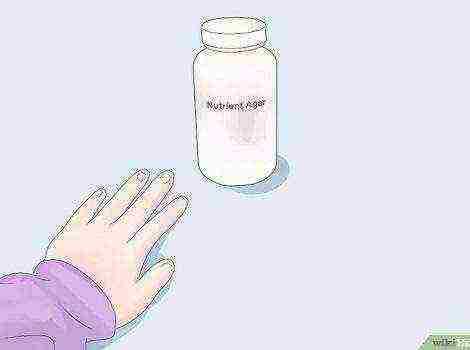Content [show]
Many people involved in the cultivation and breeding of indoor plants, prefer not to buy them in adulthood, but to germinate from seeds on their own.
This technique allows you to significantly save financial resources, since the planting material is quite cheap, and also to try to develop fundamentally new varieties. All the features of this process, as well as the types of plants suitable for such cultivation, will be discussed in detail in this article.
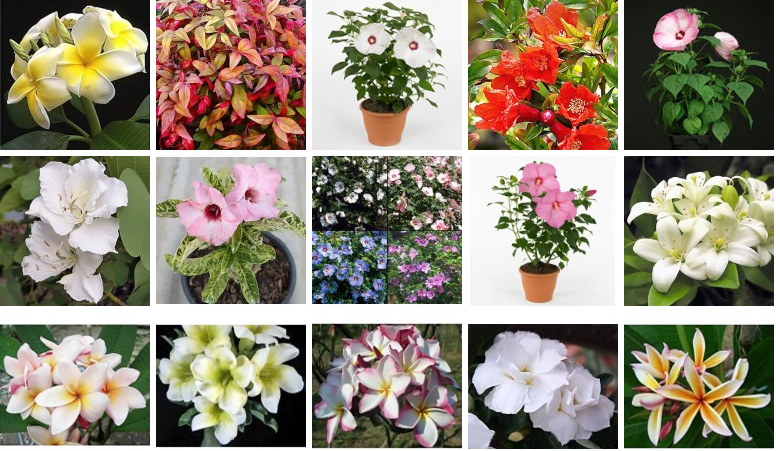
What indoor plants are best grown from seeds
Many varieties of indoor plants can be germinated from seeds, the most common options are briefly discussed below:
- Abutilon also sometimes called indoor maple, it is a tropical plant with unusual leaves that give it a resemblance to maple. At home, it is able to grow up to almost 2 meters in height, the life expectancy is usually no more than 3 - 5 years, since then the plant loses its decorative effect.
- Balsam is an Asian plant that is distinguished by its lushness and dense vegetation. There are different varieties that have individual colors of both leaves and flowers. During the purchase, you need to be careful, since only the indoor variety of balsam is suitable for home cultivation.
- Periwinkle enjoys particular popularity due to its active and abundant flowering. Inflorescences can have a variety of colors: from white to bright pink and lilac tones, depending on the selected variety. The leaves are oval in shape with a characteristic colored speck in the middle.
- Begonia is an unpretentious houseplant that looks very much like a rose. To date, a large number of various varieties have been bred, differing from each other in color and structural features of the inflorescences.
- Brugmansia is a beautiful and powerful plant with very large inflorescences, but precautions must be taken when growing it, since all its parts are poisonous.
- Jasmine gardenia is a tropical plant that is popular for its unique delicate and double white inflorescences. They are perfectly combined with lush and neat foliage, which has a bright green color, so this flower will be a wonderful decoration for any room.
- Dracaena is a deciduous plant that is very often used for decorating offices, but many people grow it at home. The leaves are distinguished by their unusual shape and color, and the crown transforms over time and turns into a stem with a dense structure, which gives the dracaena some resemblance to a small tree.
- Camellia - this is a rather whimsical houseplant, but many growers still grow it, such popularity is explained by the unique aroma and attractive appearance of the inflorescences.
- Geranium has long been a popular indoor plant, the main feature of which is to grow in height, not in breadth. Today, there are various varieties that differ in color of flowers.
- Primrose well suited for lovers of violets, since it has an external resemblance to these indoor plants, but differs from them in unpretentiousness and easier care. Among the main advantages are early flowering and a variety of varieties that differ from each other in color. For home cultivation, a special indoor variety of primrose is used.
Features and rules for growing indoor plants from seeds
The features of such a cultivation of indoor plants depend on the specific variety chosen, since they all differ in environmental requirements and have different growth periods.
However, there are a number of general rules that apply to all flowers, which are listed below:
- The seeds are pre-soaked, for this they are wrapped in gauze or bandage, after which they are immersed in clean water and kept in it for about 2-3 days. In this case, it is necessary not to forget about replacing the water, it should be carried out at least once every 5-6 hours.
- There are plants for which an exception is made, since soaking is contraindicated in their seeds. These plants primarily include begonias and virtually all varieties of cacti.
- For the germination of seedlings and their full development, it is necessary to maintain a special microclimate, its features depend on the level of frost resistance of the selected variety. Tropical breeds require a stable maintenance of the temperature regime not lower than +28 - + 30 ° C, and less thermophilic varieties will have enough temperature of + 18 ° C.
- Formed seedlings, which already have 2 - 3 leaves, need to be planted in individual pots. There is no need to hesitate with this process, since they will interfere with the development of each other when they are in the same container.
When is the best time to sow
The timing of sowing seeds depends on the characteristics of the selected plant, but they can all be divided into certain groups, for which uniform planting rules will apply:
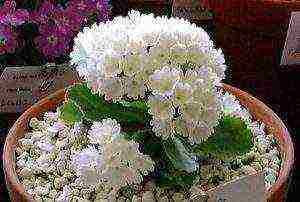
- Seeds that have a long germination period should be sown as early as possible, usually in January or early February. This rule applies to all varieties of palms, cyclamen, bauhinia, tamarind and most conifers.
- Seeds that germinate quickly enough can be planted in March and April; this applies to tamarind, large-flowered sesbania, hibiscus, antigonon and others. It is not recommended to practice early planting, since the first shoots will appear quickly enough and will immediately begin to experience a lack of lighting and heat, which will negatively affect their development and survival.
- Aquilegia and other varieties, which bloom quite early and quickly, can be planted in May.
In some situations, seeds can be sown at any other time of the year, but the cultivation technology will be much more complex. It will be necessary not only to create, but also to constantly maintain the conditions necessary for their growth and development.
When grown in the autumn or winter period, the organization of additional lighting is always required, which will consist in the installation of special phytolamps.
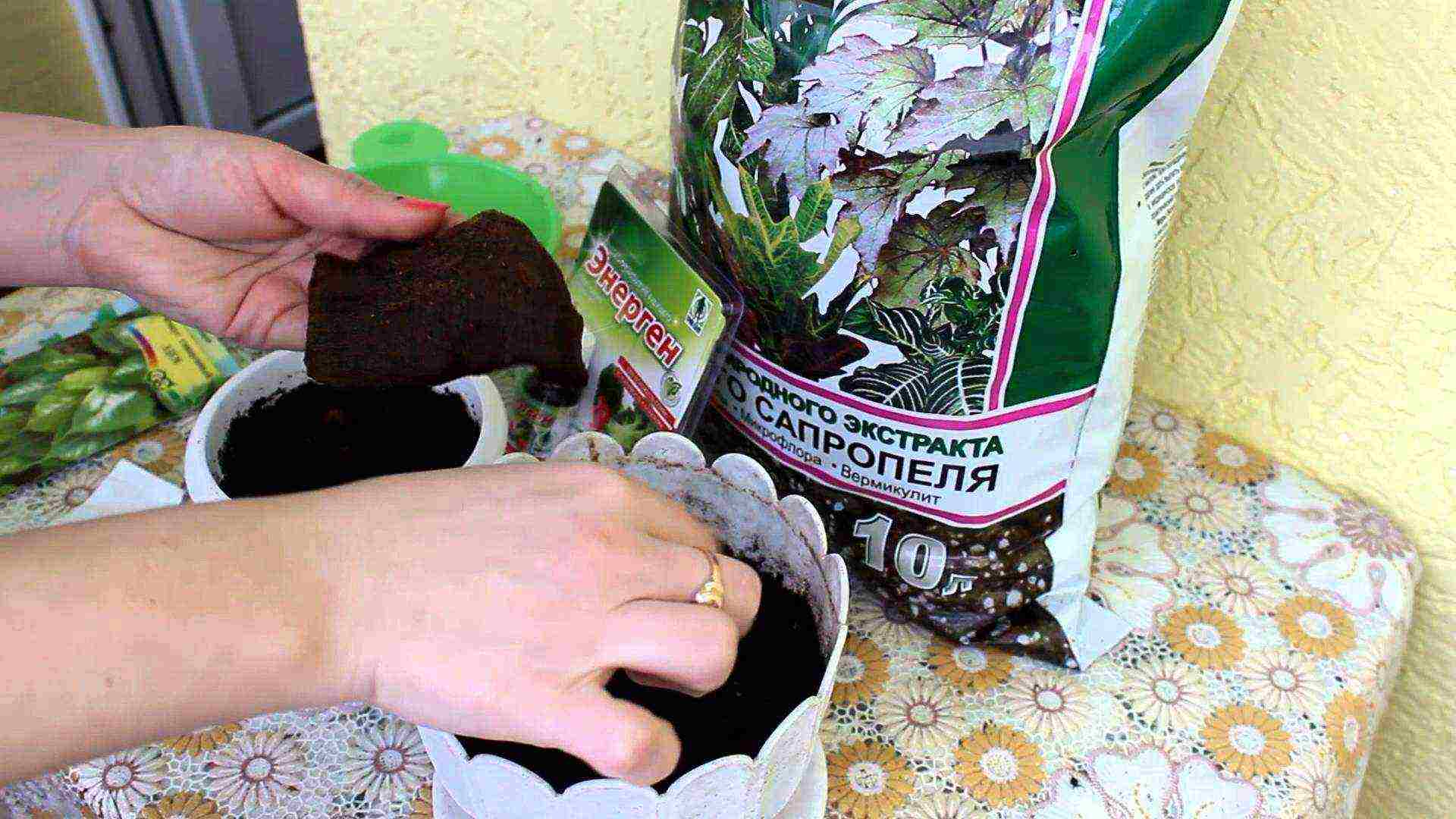
Preparing seeds for planting
Instant sowing of only purchased or harvested seeds is not allowed, since they must initially undergo preliminary preparation for this process.
Depending on the characteristics of the indoor plant variety being grown, the following procedures can be applied:
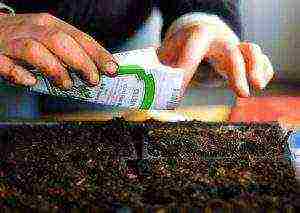
- Virtually all seeds need soaking. This process is aimed at increasing their moisture content, stimulating respiratory processes and ensuring the onset of growth.For these purposes, pre-boiled water is used, the recommended temperature is at least +25 - + 30 ° C. If seeds with a thick shell are used, then several days are allotted for the procedure with periodic water changes in order to achieve swelling of the planting material. Before sowing, the seeds must be thoroughly dried.
- Bubbling is a very effective preparation technique, which consists in placing the planting material in an artificially oxygen-enriched aquatic environment. To do this, the selected container is filled with clean water, after which a compressor is immersed in it, which is usually used for aquariums. The seeds are pre-wrapped in burlap or gauze, which does not impede the circulation of water. The volume of the container should be no more than a liter, otherwise the effectiveness of the procedure will be much lower.
- Pickling is a mandatory preparation step that must be carried out after soaking or bubbling. You can powder the planting material with dry fungicides or treat them with a solution of potassium permanganate 1%. All such manipulations should be carried out exclusively on the street or in a well-ventilated area, the seeds will be ready for planting after 2 days.
Procedures such as heating or hardening in most cases are practiced when planting fruitful crops, the seedlings of which are transplanted into open ground after a while; they do not need to be carried out for indoor plants.
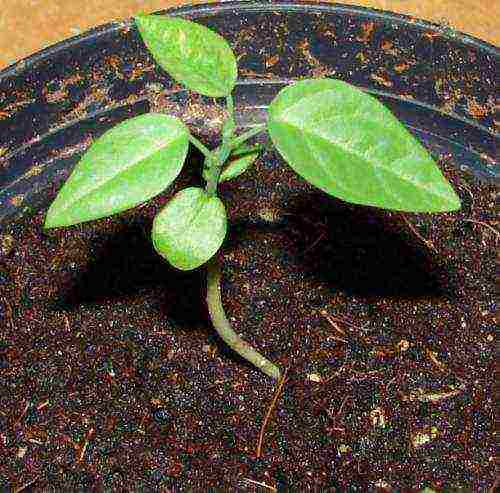
What soil to use
The choice of a suitable soil is another important process on which the likelihood of seedlings germination will depend.
Different plants have individual soil preferences, and the following general guidelines are recommended:
- For most indoor flowers, a standard substrate is suitable, which can be obtained by mixing equal amounts of peat and sand. Such a soil is considered favorable for the germination of virtually any seed.
- It is allowed to add vermiculite to the soil, but its volume should be no more than a quarter of the total amount of soil.
- Certain varieties can be germinated in pure vermiculite or river sand. There are no nutrients in such a soil, so this technique is mainly suitable for plants that easily tolerate transplanting.
Regardless of the type of soil chosen, it will first need to be disinfected. For this, the substrate is subjected to heat treatment, the easiest and most affordable way is to place it in an oven or microwave.
After that, it is recommended to let the soil settle for 2 - 3 months, this period will be enough for the reappearance of beneficial bacteria and the restoration of microflora.

How to sow indoor flowers
Compliance with planting technology is also an important condition for the growth and development of seedlings that will be obtained from seeds. All the basic rules associated with this process are detailed below:
- Soil already placed in the containermust be pre-moistened.
- Small seeds do not need to be buried in the soil as this will minimize the chances of germination. It will be enough just to spread them on the surface of the earth.
- All planting material is laid out in even layersand then re-moistened with a spray bottle.
- The top of the container is covered with plastic wrap or glass, which will contribute to the preservation and maintenance of a sufficiently warm and humid microclimate.
- Watering will not be required until the first seedlings appearas the planting material can be fed by the resulting condensation.
- Medium-sized seeds are sown using a similar technology, but they need to be buried in the ground by about 1 - 2 mm.
- Large planting material should be buried in the ground by 1 - 2 cm.
- If the soil dries out after planting the seeds, it can be slightly moistened with a spray bottle. In this case, it is necessary to ensure that too much condensation does not form, as this will indicate an excessively high level of humidity inside.
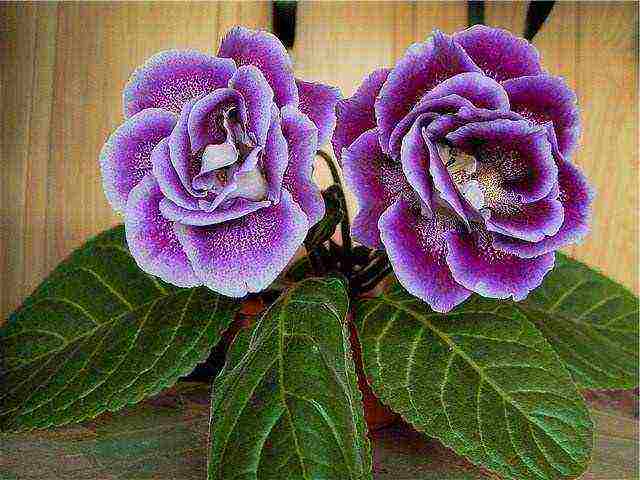
Major mistakes
The following are some of the most common mistakes that you can learn to help prevent recurrence when growing indoor plants from seed:
- Exposing seedlings to open sunlight immediately after transplanting into individual containers. Saplings need light and warmth, but for the first 2 - 3 days they are not yet ready for them, so young seedlings will need to be kept in some cool place for several days.
- Use for germination of seeds ready-made earthen mixtures purchased in the store. The only exception is purchased soil intended directly for seedlings, since other options have too high a concentration of nutrients, and this can suppress germination.
- The initial acquisition of plants that are too demanding, for which it is impossible to create the necessary comfortable conditions. All varieties have individual requirements for the level of lighting, degree of humidity, temperature, soil and other factors. You need to familiarize yourself with all the nuances before making a purchase to make sure that it is possible to provide the required conditions at home.
Florist tips
Summing up, you can give the following tips and advice from experienced florists:
- All seeds have an expiration date, so when making a purchase, you need to pay attention to it. Other important criteria are compliance with GOSTs and the reliability of the manufacturer, information about this must be indicated on the packaging.
- After planting the seeds and before the first shoots appear in the container, it is recommended not to open the container again, so as not to disturb the microclimate. An urgent need usually arises only in case of drying out of the soil, this usually indicates a violation of the planting technology.
- It is preliminarily recommended that you familiarize yourself with the photographs of the indoor flowers selected for growing in adult form., this will allow you to understand how well they will be in harmony with the overall design of the room.
Foreword
In an apartment or in a country house, green spaces can sometimes be no less than in flower beds in the garden, while you can start with empty pots, growing indoor flowers from seeds. In this case, the plants will initially get used to the surrounding microclimate.
Buy a ready-made bush or grow from a seed - that is the question!
Perhaps everyone faced a problem when a flower brought into the house, transplanted for you by someone from your acquaintances and completely rooted in its container, suddenly began to wither in a new place and died. The reasons are quite understandable - differences in lighting, air humidity, temperature conditions. As a result, the plant cannot acclimatize under unfamiliar conditions. But if you plant a seed in the same pot and create the necessary conditions for its germination, you will almost certainly get a sprout that has hatched, which will subsequently grow into an indoor flower. After all, an apartment or a country house has an advantage over a garden in that all year round the temperature in living quarters is maintained quite comfortable for plants. That is, housing can be compared to a greenhouse in which winter is not an obstacle for sowing.
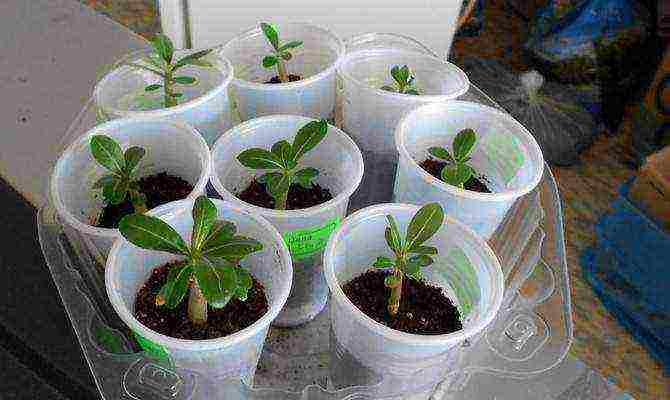
Seed-planted indoor flowers
Of course, if you urgently need to green a recently rebuilt or renovated cottage, or a new apartment after moving into it, you can give preference to adult indoor plants. And at the same time sow some crops to see them emerge from the seed.Actually, everything here depends on the type of flower, its exactingness to certain conditions. There are unpretentious ones that grow everywhere, on any windowsill, regardless of which side of the world the window is facing. But there are also many crops that will not take root in a new place if they were grown in different conditions. It is advisable to plant them only with seeds. At the same time, it may be necessary to create additional conditions: curtains on windows, thermal insulation of frames, organization of drip irrigation, purchase of specialized soil.
Which crops are best planted with seeds - choose among many
You can sow almost all indoor flowers, but some of them take root perfectly by layering, dividing, even just torn off leaves can form a root system. Therefore, in order not to sort out all existing plant species, we will selectively consider a few of those that reproduce exclusively by seeds. These, for example, include the Persian cyclamen. Actually, it can also be planted with bulbs that originate at the base of the stem in the root system, but they do not always sprout, since they are very capricious to the state of the soil. The seeds of this plant are formed in a small box, from which it is convenient to extract them.
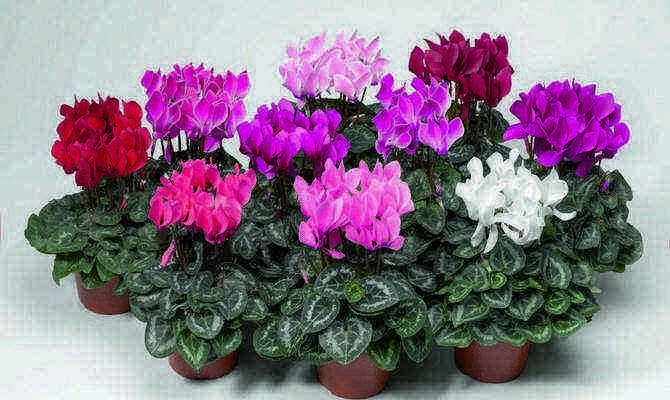
Cyclamen Persian
The ever-flowering begonia is very popular among flower growers, which, in fact, at room temperature and in a constant microclimate of the room, can bloom all year round. You can plant it with cuttings, but if you are not sure that such planting material is viable, it is better to use sowing. At the same time, there are quite a few different varieties, the smallest of which give bushes no more than 8 centimeters high, crowned with caps of rather large inflorescences, and the tallest grow up to 35 centimeters. It should be remembered that begonia seeds are extremely small, and therefore require special handling in preparation for sowing.
Schizanthus Feathered, which is also popularly known as the orchid of the poor, for its striking resemblance to this exotic flower, propagates exclusively by seeds. True, not all lovers of indoor crops may like the fact that schizanthus is an annual plant, which means that it requires an annual planting. However, if you pick up a pot for him spacious enough, you can expect the emergence of new shoots in the next season from self-seeding. This indoor culture is good because it is very affordable and, when sown on seedlings, gives a good percentage of shoots. At the same time, it is better to give preference to undersized varieties that grow up to 30 centimeters. And what should be taken care of in advance is a high-quality soil saturated with organic matter and mineral elements, as well as drip irrigation.
Waller's balsam, which usually propagates either by cuttings or seeds, will be an excellent option for landscaping a residential area. But the first method is far from suitable for all varieties, very often the plantings turn out to be unviable and quickly die when trying to root them in a new place. Therefore, you need to collect the capsules before they are opened for self-seeding, and dry the seeds for storage until next season. The seed can lie for quite a long time, but after 4 years only 50% of the seeds will germinate, so it is undesirable to delay planting them. Most balsam varieties are tall and only suitable for the garden, but there are a few hybrids that grow into small bushes with compact buds.
They look very nice on the windowsills of primroses, especially Softish and Chinese. These are rather unpretentious plants that reproduce exclusively by seeds, and at home it is first necessary to carry out artificial cross-pollination. Moreover, they grow even in the shade, which allows them to be hung in pots at some distance from the windows.The only condition that must be observed is that the soil must be frequently moistened, otherwise these plants will quickly die. It is especially important to take this into account if the flowers will stand on the windowsill facing the sunny side of the house.
You should also decide on the basis of the speed of plant development, since some crops grow faster, others much slower. Of the above, the smallest time for growth is necessary for balsam, and the ficus familiar to many, indoor pomegranate, can also quickly stretch. Cyclamens develop rather slowly. Brovallia, kufeya can also be considered slow-growing. As for storing seeds, it is not recommended to delay for a long time with planting indoor hibiscus and adeniums, since after a short time most of their seeds lose germination.
How to properly prepare seeds for sowing - the first chores
Before planting flowers, you need to prepare them for sowing, especially if the material was bought in a store without special packaging, which is called “poured into a bag”. And first of all, it is imperative to disinfect the seeds, since they may contain bacteria that can spread after a while to neighboring crops, destroying previously recent plantings. To destroy harmful microorganisms, we use special preparations that can be bought in flower shops. There are also recipes for self-made disinfectants.

Zircon for seed disinfection
Of the purchased substances, Epin is the most popular, which must be used strictly according to the instructions. If there is none, then, according to the advice of flower growers, you need only 2 drops of the drug per 100 milliliters of water, and soak the seed in it for a period of 16 hours to a day. You can also use the phytohormone Zircon, which is enough 1 drop per 150 milliliters, in which the seeds need to be kept for no more than 10-12 hours. Gummates of sodium or potassium have proven themselves well; a solution of 0.005 to 0.01% is made of them (respectively, 1 drop per 2 or 1 liter) to soak the seeds for 24 hours. Copper sulfate is also suitable for such a purpose, in its weak solution, no more than 1%, that is, 1 gram per 100 milliliters, the seeds are kept for no more than 10 minutes, otherwise the planting material will be destroyed.
You can hold the seeds in a 1% solution of potassium permanganate for up to 10-15 minutes, for which you need to measure 1 gram and stir it in 1 glass of water, or take a flat teaspoon and dissolve in 600 milliliters. From available tools, you can use aloe juice, it perfectly disinfects seeds, destroying bacteria. And you do not need to squeeze the fresh leaves, but keep them in the refrigerator for 5-6 days, then finely chop and grind. In the resulting gruel, the seed, previously wrapped in gauze, should be soaked. Another way is to use orange juice, freshly squeezed, in which the seeds are kept for at least 3 days.
After soaking in poisonous preparations, the inoculum should be washed in clean water for at least 30 minutes, after other solutions, light rinsing and short-term immersion in hydrogen peroxide are sufficient.
In addition to the above measures for disinfection, flower growers use other measures to prepare seeds for planting. Good results are obtained by bubbling, that is, saturating the seeds with oxygen. To do this, they are placed in a container with water, at the bottom of which an air atomizer put on a flexible tube from the aquarium compressor is lowered. Soaking is carried out for 10 hours, and during this time the device must work, saturating the water with oxygen. This accelerates seed germination after planting. Also, the hardening of the seed is often carried out by wrapping it in gauze soaked in a manganese solution and keeping it in the refrigerator for up to 2 days.If you purchased granulated seeds, that is, placed in special casings, they should not be processed.
When and how best to plant crops - the basics of floriculture
Unlike garden plants, flowers can be sown on the windowsill almost at any time of the year, if the necessary conditions are created with sufficient lighting, optimal temperature and humidity. However, some crops should be planted immediately after harvesting seeds, which are not recommended for storage for a long time, in particular, this applies to all the same cyclamens. Therefore, the main part of planting occurs in February – March, and part is carried out in September – October. In winter, it is better to refrain from sowing, since the heating radiators from below heat the window sill, and the cold comes from the window glass.
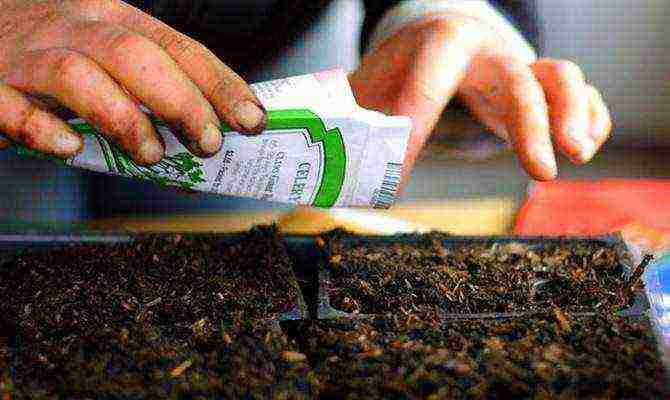
Planting seeds
For seeds, the most nutritious soil is best suited, preferably based on peat or humus, flower growers, for example, actively use peat tablets for germination. However, as a permanent soil for plants, this option is not suitable, therefore, for the seed, a special soil is needed only until the sprouts with a couple of leaves appear, then the seedlings should be transplanted. Be sure to first disinfect the ground, for which it is poured with boiling water, dried in the oven or soaked in a solution of potassium permanganate. We recommend pouring fine expanded clay on the bottom of the pot or box for drainage and air penetration into the soil, and first scald the material with boiling water.
Planting methods for all crops are individual, but in general, it is enough to sprinkle most of the seeds with well-crushed loose soil to a depth of 3 of their diameters. Some flowers need to be covered with glass and must be removed from direct sunlight, cyclamens germinate even better in the shade than in bright light. The smallest seeds must be mixed with sand for even sowing, for large ones, either separate holes or a groove are made, where they are laid with small intervals of about 3 centimeters. Florists recommend dropping a little water on granular seeds so that the shells dissolve in the soil.
Rate the article:
(0 votes, average: 0 out of 5)
Quite a few. First, all citrus fruits. True, the seeds must be sown almost fresh. Several types of palm trees, the most common is to sow a bone from a dry date. Perfectly and extremely easily and quickly propagated by seeds, such a deservedly widespread plant as pelargonium, better known as geranium. If sowing is done now, then in a week, or even earlier, seedlings will appear, and by the beginning of summer, flowers will appear. If, after the threat of frost, the plant is planted on a balcony or a personal plot, it will develop a powerful bush over the summer, which must be removed to a room before the onset of cold weather, where it will delight with flowers for a long time. By the way, geranium is an excellent donor of positive energy.
Seeds are grown for violets, passionflower, coleus, gloxinia, amaryllis and many other plants for indoor use. After sowing, some of them need to be placed in the refrigerator for several weeks for stratification - this will accelerate the emergence of seedlings.
In general, there is a special seed series "Indoor flowers".
I really like to grow indoor flowers, because it is not always possible to grow an indoor flower bought in a store, which after a few days fades / dies.
In order not to be disappointed in the flowers bought from the shops, it will be just right to grow the same flowers from seeds, which can also be purchased in flower shops.
It is known that it is difficult to grow flowers from seeds, but if you try, you can succeed.
Usually, it is possible to grow from seeds, famous indoor flowers, these are - cyclamen, gloxinia, geranium, cacti, dracaena, orchid, abutilone, palm.
To achieve good germination, you need to plant correctly, each plant has its own chapter.
I will add that new pelargoniums and gloxinia are now growing up on the windowsill. One of these days I will dive. Lemon eucalyptus grows beautifully and quickly, but if you want a beautiful bush, you will have to sow every two years. I did not succeed in propagating it by layering, but it loses its beauty quickly. But the scent is amazing.
A cyclamen grows on the loggia. He is hot in the apartment, and cold on the loggia in winter. Therefore, they came up well, but growing them turned out to be a problem for me.
Rosemary is a favorite plant in the kitchen. I use it for cooking. Seed germination was poor. They sprang up for a long time and not amicably. I left myself one. Now I will try to renew it vegetatively.
And the child is also trying to grow cacti. They ascended well, but not all survived. They grow slowly. They are now two months old.
The rest of the photos will not be duplicated. You can see them in the previous answer. One of these days I will try to sow cyperus. I don’t know why I need it …….
The well-known geranium can be grown from seeds. Seeds in stores are sold in bags with the name quot; pelargoniumquot;. Buying a plant already in a pot is still not cheap, and it is not difficult to grow from seeds, you can even grow several plants with flowers of different colors. It is advantageous that the plant grows quite quickly and begins to bloom after 3-4 months. There was a case when I did not cut off a faded geranium umbrella in time, pods appeared in place of flowers and I decided to let the seeds ripen. So these seeds had 100% germination
This is a tricky question. You cannot list everything, you will definitely forget something. I will say this - everything can be grown from seeds, propagated by seeds. There are plants that reproduce only by children or cuttings, so they certainly cannot be propagated by seeds))
Those plants that I planted with seeds, I will tell and for the most part show.
For example Muraya, a very healthy tree and leaves and the smell of flowers and fruits, everything is edible and healthy. it reproduces by seeds easily, blooms within half a year after germination, the first flowers fall off, but already next year everything blooms and the fruits are tied.
Dracaena dragon, planted nuts, there is a photo of how it grew and developed, transported to work, because. At home, there is not enough space for dracaena.
AdeniumI sowed, sprouted perfectly, out of 5 seeds 4, unfortunately I lost 2 in the process of growth, but 2 remained. now they are already much larger than in the photo, but they have not bloomed yet ((.
Asparagus, I really wanted Cirrus, I bought the seeds, but the usual ones sprung up.
Cactus the mix came up very amicably, they are still growing.
Nightshade, though the seeds are not from the store, a friend shared, but this is what has grown, by the way, the plant is poisonous and the berries are too!
CyclamenThey sprout well, too, but they didn’t work for me, the air is hot and dry in winter, although I suffered with them for several years, and their seeds ripened and planted them with their own seeds, but gradually everything came to naught ..
Mother of thousands, this beauty grows, even though it is obliquely mowed, it grows fast, it reproduces itself by seeds in all pots, it is simply not replaceable for covering the earth in large pots.
This is what was planted in recent years, when the camera appeared, and how much was planted and not captured ...
I grew balsam. The hardest thing was to collect the seeds: when ripe, they were quot; shotquot; out of the box. I had to put on quot; muzzlequot; from a cellophane casing of a cigarette pack. Since the seeds were from a white-pink hybrid, the new flowers came out in a variety of colors: white, pink, crimson.
He is a big fan of indoor flowers, I especially love those flowers that bloom and delight the eye. I always go to a store where they sell flower seeds, buy, experiment. Frankly, I planted Cyclomen, Posiflora, Balzamin, everything was not successful. They didn't even sprout, although the seeds were fresh.And how many times I plant them, the result is always zero. What is the reason for this is not clear. But on the other hand, Abutilon rises after 4 days and grows beautifully. No matter how much you plant, everything rises. I have already given it to all my friends and relatives. Still growing well and the main thing that blooms for me is Katarantus. I bought mixed varieties of Katarantus and now they bloom with different flowers in one pot. White (beige), pink, red and lilac. Very beautiful. Nightshade grows well, but most of all with seeds I liked planting and growing succulents. They are not whimsical at all, they grow quickly, they are beautiful. Echeveria cushion blooms very beautifully. The sedum is also very beautiful.
Most of us have houseplants. Some have the simplest and most unpretentious, some exotic and rare. And in the homes of enthusiastic florists, you can find whole collections of extraordinary specimens.
And how sometimes you want to plant a new flower on the windowsill, a colorful photo of which I saw on the Internet. It seems that it is simple - you just need to select the seeds of the variety you like in the online store, order them, and then sow and wait for the shoots. In fact, growing houseplant seeds is not easy. There are many subtleties and nuances that you will learn by reading the article. Let's get started ...
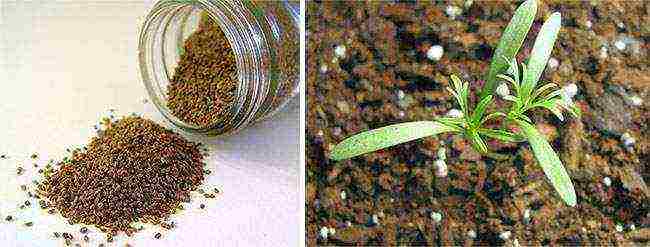
First of all, you need to find out the advantages and disadvantages of growing houseplants from seeds, as well as which house flowers reproduce well in this way and which do not.
Pros and cons of seed reproduction
Perhaps the advantages of this method are obvious:
- Seeds are sold everywhere and are not expensive at all;
- You can get a rare, exotic plant that is not found everywhere. The variety of species and varieties sold as seeds is mind-boggling;
- Unlike cuttings, which are easily damaged in transit, weightless sachets travel easily in simple postal parcels.
It seems that there are no problems - order the seeds of any indoor plants in the online store and grow them to your delight. Unfortunately, this is not entirely true:
- Seeds are a cat in a bag. Until the indoor flower rises and grows, it is very difficult to understand if the seller has cheated. It so happens that instead of luxurious exotic, ordinary weeds sprout.
- In addition, unscrupulous sellers often put fewer seeds in the bag than indicated on the package;
- Another issue is expiration date. Old seeds will either not sprout at all, or their germination rate will be much lower;
- The duration of germination of seeds and the production of an adult home plant from them is much longer than the time of rooting of cuttings. And flowering and fruiting specimens later form flowers and ovaries. The timing can differ very significantly - for example, a home-grown banana grown from a shoot will give fruit already in the second year of life, and a banana obtained from seeds only in the third or fourth year.
There is no point in collecting seeds from a hybrid plant yourself. As a rule, varietal qualities are lost.
What indoor plants can be obtained from seeds
Not all indoor flowers propagate easily by seed. Plants whose seeds sprout quickly and have good survival rate include: abutilone, asparagus, dracaena, sheffler, pelargonium, balsam, crossandra.
There is a separate group of indoor plants, whose seeds germinate for a very long time. These are nolina, brovallia, various types of cyclamens, washingtonia and other palms. An inexperienced grower, without waiting for the sprouts, sometimes believes that the seed has died. In fact, development is very slow and takes a long time.
Below is a table of seed germination times for some indoor plants.
| Home plants |
Fast germination (4-12 days) |
Average germination (12-17 days) |
Slow germination (from 20 days) |
| Abutilon | + | ||
| Adenium | + | ||
| Agave | + | ||
| Balsam | + | ||
| Begonia | + | ||
| Washingtonia | + | ||
| Gardenia | + | ||
| Hibiscus | + | ||
| Indoor pomegranate | + | ||
| Crassula | + | ||
| Oleander | + | ||
| Pelargonium | + | ||
| Sansevieria | + | ||
| Streptocarpus | + | ||
| Fatsia | + | ||
| Date palm | + | ||
| Hamerops | + | ||
| Cyclamen | + | ||
| Cissus | + |
There are representatives of domestic flora who are very demanding on the quality of planting material. So, for example, hibiscus, gardenia, murraya, coffee tree, adenium practically do not grow from old seeds.
Finally, some plants are very difficult to obtain from seeds. These types include cacti, myrtle, bougainvillea, fuchsia.
Technology for growing indoor plants from seeds
In general, the technology of seed propagation of domestic plants can be divided into several stages:
- selection and storage,
- seeding time,
- seed preparation,
- soil and capacity,
- disembarkation
- seedling care.
Let's dwell on each of the points in more detail.

Selection and storage of seeds
In order to get a good result, you need to choose the right seeds.
Seeds of plants planted in open ground must be selected based on many factors: climatic zone, sowing plan, hybrid properties. For indoor representatives of flora, all this is not so important, however, there are several important nuances here.
First, when buying seeds for home plants, you should carefully choose the seller and manufacturer. Their reputation is a guarantee that you get exactly what you ordered. Therefore, before making a purchase, you should carefully study the reviews of flower growers on the relevant forums.
In general, Russian companies are much stricter in quality control than their Chinese counterparts. As for the seeds ordered in the Celestial Empire, it is more like a tape measure - there is a possibility of getting an empty package or a completely wrong plant, but, of course, the low price captivates.
The second important factor in the selection of seeds is the plant itself. An important role is played by the size of an adult specimen and the conditions for keeping a home flower. If, for example, you want to decorate a small room, you shouldn't buy palm seeds. In the case when the windows of the room face north, shade-tolerant representatives of the indoor flora will be the best choice. The area of the room, winter and summer temperatures, air humidity, lighting conditions - before buying, you should carefully study each of these parameters.
It is better to use seeds of indoor plants fresh and not store them - germination is lost quite quickly. If it is not possible to plant a seed right away, the packaging should be put in a dry and dark place, protecting it from mold.
Seeding time
The best period for sowing the seeds of the vast majority of indoor plants is late winter-early spring (February-March). At this time, all nature awakens: the day becomes longer, the sun shines brighter, gradually warmth comes. A seed planted at this time will germinate much easier, and young shoots will be strong and healthy. Even cyclamens, the seeds of which are traditionally sown in September, germinate better in spring.
Why not sow indoor plant seeds in the fall? It's simple:
- The day is getting shorter, there is not enough sunlight. This makes the sprouted sprouts look pale and too elongated;
- Due to central heating, the air in the room is too dry, which negatively affects germination;
- Due to sudden changes in temperature (cold from window glass and heat from batteries), the seeds grow moldy and die.
However, if you try and provide optimal conditions (consistently high temperature and humidity, additional lighting), seeds can be sown all year round and get good results.
Seed preparation
Before planting seeds of domestic plants in the ground, they need to be prepared. First of all, for better germination, they can be soaked in bioactive solutions:
- "Zircon". Soaking time is 12 hours. Solution - 1 drop per 150 ml of water;
- Epin. Soaking time is 24 hours. Solution - 2 drops per 100 ml of water;
- "Potassium humate", "Sodium humate". Soaking time is 24 hours. Solution - 0.01%.
Thanks to artificial biostimulants, seeds germinate much faster, and the emerging shoots take root much better.
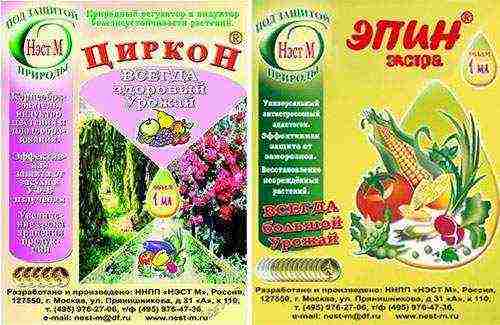
There are also natural (natural) growth stimulants: aloe juice, ash solution, honey, potato juice:
- Aloe juice. Soaking time is 24 hours. Solution - aloe juice and water in a 1: 1 ratio;
- Ash. Soaking time is 4 hours. Solution - 2 tbsp. tablespoons of ash per liter of water;
- Honey. Soaking time is 5 hours. Solution - 1 teaspoon of honey in a glass of water;
- Potato juice. Soaking time is 8 hours. Several tubers must be placed in the freezer for several hours, then removed, thawed and squeezed out.
Some growers recommend disinfecting seeds before planting. For this, a solution of ordinary potassium permanganate is the best fit. The solution should be pale pink and the total soak time should not exceed 15 minutes. After the procedure, the seeds must be thoroughly rinsed.
There are also more exotic ways of soaking seeds: in lemon or orange juice, in vodka, in paste, and so on. Whether to use them or not is up to you.
Seed bubbling
The bubbling technology will help to increase the germination of old seeds. Bubbling is the soaking of seeds in water saturated with air.
You will need: a tall jar, about 2/3 full of water, and an aquarium compressor. The seeds are poured into the jar, the sprayer is lowered to the bottom, after which the compressor can be turned on. The air should be supplied for 12 hours, after which the seeds should be removed, slightly dried and sown.
Seed scarification
This term means a violation of the integrity of the seed shell for better germination. Only seeds in a hard shell need to be scarified, for example, seeds of indoor banana, avocado, date palm.
The casing is carefully sharpened with a file, emery paper or a nail file to a soft layer, while there should be no through holes. Also, you can make notches on the side where the shoot will subsequently appear.
Another, longer, method of scarification is to place the seeds in a mixture of sand and gravel and stir them for two months. The shell will gradually wear off. To facilitate the scarification process, hard seeds can be soaked for two days.
Seeds in casings made of special compositions cannot be bubbled and scarified.
Soil and container for disembarkation
The soil suitable for planting seeds is different from the soil mixture for mature plants. First of all, it must be loose, water and air permeable, sterile, and also contain a minimum of organic matter.
From the ready-made options sold in stores, you can select a seedling mixture and peat tablets.
Self-preparation of the substrate is also possible. There is no single recipe, each option is good in its own way. It remains only to choose the appropriate one, based on the available ingredients:
- floriculture classics - peat-sand mixture (1: 1);
- peat, sand and cocoa soil (1: 1: 1);
- peat, sand, perlite (1: 1: 1);
- peat, vermiculite (1: 1).
There is also an exotic, uncommon option - a hydrogel for plants. It is used both in its pure form with the addition of complex fertilizers, and as an additive to the substrate.
After the soil mixture is ready, it must be disinfected - spilled with a weak solution of potassium permanganate, frozen, or, conversely, kept in a hot oven. To reduce the likelihood of soil acidification, you can add a little crushed activated carbon and "Fitosporin" (a drug against fungal and bacterial diseases).
As you know, for better germination of seeds, high humidity and heat are required. In order to create suitable conditions, growers sow seeds of domestic plants in greenhouses. There are store options, which are plastic boxes with a divider and a transparent lid with holes.The same can be made yourself from a food grade plastic container. It should be transparent and closable, there are no other special requirements. As a last resort, any container without a lid, covered with a plastic bag, will do.
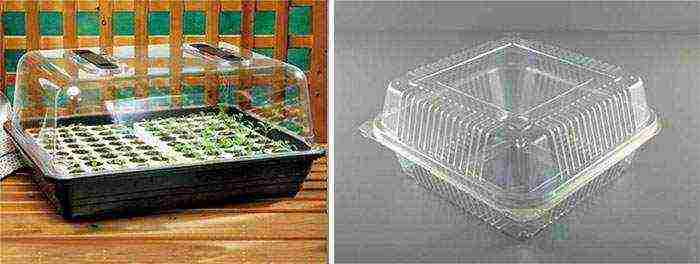
Planting seeds of indoor plants
So, the seeds are prepared, the substrate and capacity are selected, it's time to sow.
This process can be described step by step as follows:
- At the bottom of the greenhouse, we pour a layer of fine expanded clay, which acts as a drainage;
- Place the soil on top;
- We moisten the substrate to the base, spraying with water from a finely dispersed spray bottle.
- Without deeply deepening, we plant the seeds.
The degree of penetration depends entirely on the chosen houseplant. On average, the sowing depth is equal to two to three diameters of the seed.
The seeds of some domestic plants (adenium, gloxinia) are not buried at all, but simply spread out on the soil surface.
Further care is not difficult. First, the greenhouse must be placed in the warmest place in the apartment. Some growers even put a container with seeds on the battery, thus arranging the bottom heating. This is a rather risky method, as there is a possibility that the seeds will simply "cook".
Secondly, you need to decide on the illumination. It is better to germinate some seeds in bright sunlight (adenium, eustoma, dionea), others, on the contrary, in the dark (cyclamen). Depending on the preferences of the plant, we remove the greenhouse in a dark place or expose it to the sun. If the seeds germinate in summer, in the heat, the open sun is contraindicated, the best option is a small partial shade.
From time to time, the seeds need to be ventilated by removing the cover of the greenhouse. The frequency of airing is about 15 minutes a day. In addition, the substrate should be slightly damp at all times.
It remains only to wait for the first shoots ...
Seedling care
After the seeds hatch, and the seedlings grow about half a centimeter, the upper part of the greenhouse must be removed, accustoming the shoots to normal room temperature.
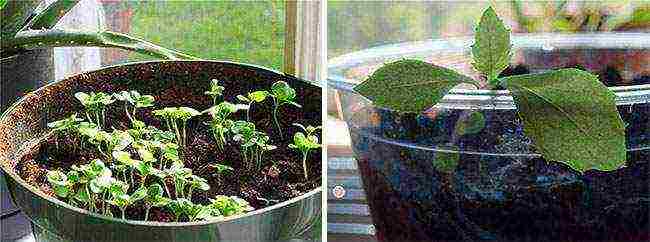
Developing seedlings are usually very weak and sometimes unstable on the ground. In this case, you can use a support or simply pour and compact the earth around the stem.
After the first pair of leaves appears, the seedlings can be opened.
Picking is the process of transplanting young plants from a common container into separate pots.
To do this, you need to take plastic cups according to the number of shoots, filled with a soil mixture suitable for adult plants. For diving, you should choose only strong, healthy seedlings, and discard thin and yellowed ones. In order for young seedlings to be easily removed from the ground, they need to be watered abundantly, then carefully removed from the soil with a spatula and planted in prepared cups.
When diving, it is important not to deepen the growth point. If this is done, the plant will stop developing and may die.
In the future, when the seedlings grow a little, they can be opened again or planted immediately into a permanent container.
As you can see, growing a house plant from seeds, while not easy, is still possible. And an adult green handsome man, obtained from a small seed, can become a real source of pride for a florist.

